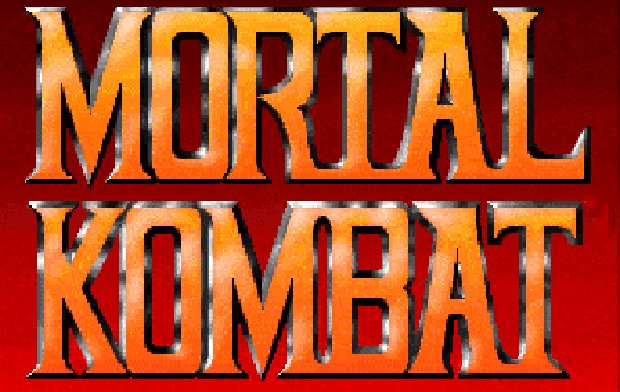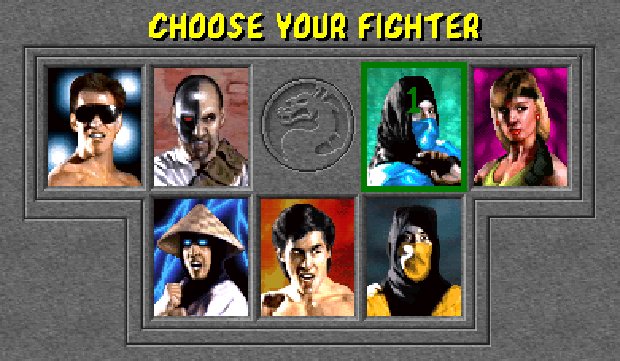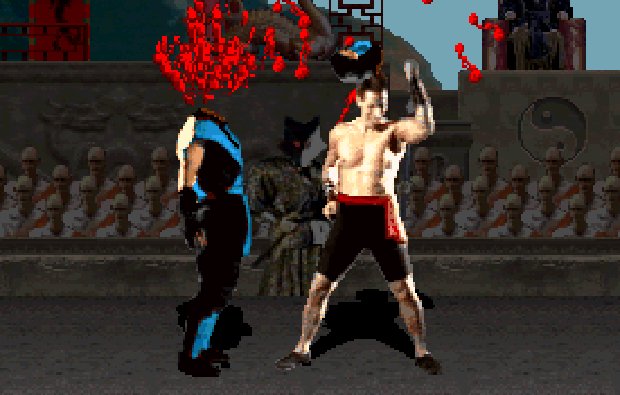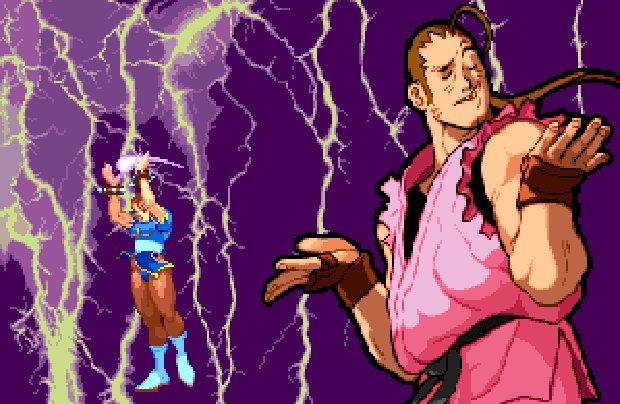The history of Mortal Kombat
Prepare yourself! We examine the original arcade hit that corrupted minds and led to the creation of the ESRB
After several years of meandering sequels, Mortal Kombat is finally going back to its roots. Just as Street Fighter IV reinvigorated Capcom’s flagging franchise, this year’s new Mortal Kombat hopes to kick-start a brand new chapter for the spine-tearing series. To ensure a successful reboot, developer NetherRealm has wisely chosen to focus on the three original games for inspiration; those three titles gripped arcades, sold millions on consoles and spawned TV shows, movies and comics, so it’s no surprise to see devs mimicking the glory days of the initial trilogy.
But before it erupted into a gaming powerhouse, Mortal Kombat was just one of countless Street Fighter II knockoffs itching for a chance in the spotlight. We’ll spend the most time on this title, then touch on how 2 and 3 set the stage for this year’s edition. Let’s begin in 1992 with…

In the early ‘90s, Street Fighter II dominated the gaming scene. Its colorful fighters, flashy special moves and shockingly deep gameplay gave arcades a much needed shot in the arm, igniting a new era of coin-op prosperity and defining an entire genre of games. Not long after it rocketed to superstardom, a small team of developers feverishly cranked out a competing fighter for arcade giant Midway. Ed Boon and John Tobias (among others) would go on to create not just a competitor, but a whole new mega-franchise.
Mortal Kombat’s digitized martial arts actors and massive amounts of blood caught patrons’ (and politicians’) attention; after seeing the blood, gruesome finishing moves and semi-serious story MK boasted, Street Fighter seemed downright cartoony by comparison. But underneath the splashes of red and cries of “Finish Him!” lied a fighting game that was notably less complex than Street Fighter. That isn’t to say the game wasn’t fun, or that it was completely mindless. The pieces it stole from Street Fighter (quarter-circle inputs, projectiles etc) worked fairly well and its new ideas (fatalities, a designated block button, uppercuts that launch foes and set up juggle combos) made the experience unique. However, it definitely lacked the subtle nuances that would go on to make Street Fighter the hardcore fighters’ preferred game.

Above: The famous uppercut, which usually caused the crowd to “ooh!”
Part of the problem was the moveset; each character had unique special moves, but oftentimes the most useful and powerful attacks were standard to each and every fighter. Everyone had an uppercut, sweep and roundhouse attack, all activated the same way, making the characters somewhat interchangeable. To be fair, some uppercuts had a narrow reach and some roundhouses could tag opponents from farther away, and some characters (like Scorpion) could chain a few moves together for some seriously damaging combos.
Even when considering its many faults, MK’s alluring mix of real people and intense violence made it a serious contender, and even though it’s slow and basic by today’s standards, we still admit a soft spot for this admirable opening shot across Capcom’s bow.
Weekly digests, tales from the communities you love, and more
The Kombatants

As the sequels went on, MK’s plot became wackier and wackier until it hit borderline nonsense. In the first installment however, things were simple. Basically, seven fighters arrived on Shang Tsung’s personal island for various reasons and entered the Mortal Kombat tournament. There were no discussions of balancing furies, Outworld invasions or any of that crap until the sequels; instead, the first MK is a basic martial arts movie with a supernatural villain.
Johnny Cage

A Hollywood star, Cage enters the MK tournament to show his fans he’s not just a fantasy action hero, but can actually kick ass in real life. Cage is actually based on Jean-Claude Van Damme, who was supposedly going to star in his own game fighting various digitized opponents. That never materialized, leading to the creation of MK as we know it, and then to Cage himself as an echo of what almost was.
Like most MK fighters, Cage used direction-based special moves. Instead of a Ryu fireball motion, for example, you’d tap Back-Forward-Low Punch to toss Cage’s green projectile, or Back-Forward- Low Kick to send him rocketing forward with a flash kick. Maybe it’s a sonic kick? Who knows – unlike Street Fighter, MK’s fighters don’t announce the moves they’re performing.

Above: Johnny “I’ll do the splits for a dollar” Cage
Signature move: The devastating nut punch. This move is notable for several reasons: it’s performed in a decidedly un-Street Fighter way (hold down+Block+Low Punch), so it exemplifies one way in which MK distanced itself from the competition; it’s arguably the first sign of the silly direction MK would take in the future, as anyone hit by this attack grabs their groin in a Looney Tunes-esque fashion; and finally, if you try this move on Sonya Blade… he just does the splits. Ladies can be punched in the junk too, Cage!

Fatality: In the first MK, each fighter only had one fatality. Later games would up this number to two or three, plus babalities, friendships, animalities, brutalities… it goes on and on. But for now, Cage simply performs the regular uppercut motion and the other person’s head pops right off. Some blood flies out. Whee.
Above: And here’s his officially licensed theme song. Johnny Cage is not afraid to die!
Kano

Leader of the Black Dragon crime organization. On the run from Sonya Blade and her special forces squad, Kano winds up on Shang Tsung’s magic island. He enters the Mortal Kombat tournament to face Sonya on even terms, and for wealth: apparently, there’s a bunch of gold hidden in Tsung’s palace (or something).
Kano really seems like an effort to kinda-sorta look like a Terminator; T2 was still hot shit in 1992, so a metal-faced, red-eyed killer dude was probably a smart, subconscious move.

Above: But Blanka he ain’t
Signature move: Knives? Check. Gruff man-shouts of victory? Check. Rolling into a ball and hurling himself at enemies? Ch…huh? For whatever reason, Kano had the ability to Blanka himself across the screen, accompanied by a bizarre sound effect. Like Cage’s nut punch, its execution was distinctly MK – hold Block and perform a full circle motion.

Fatality: Again, only one, but it’s a doozy – Kano tears out the still-beating heart of his opponent and holds it up high. Once MK’s brutal finishing moves were revealed to opportunistic congressmen, this horrific fatality was paraded around as gleefully as the hearts Kano tears out.
Above: Kano, you’re in danger, a fallen angle. But I feel for you


